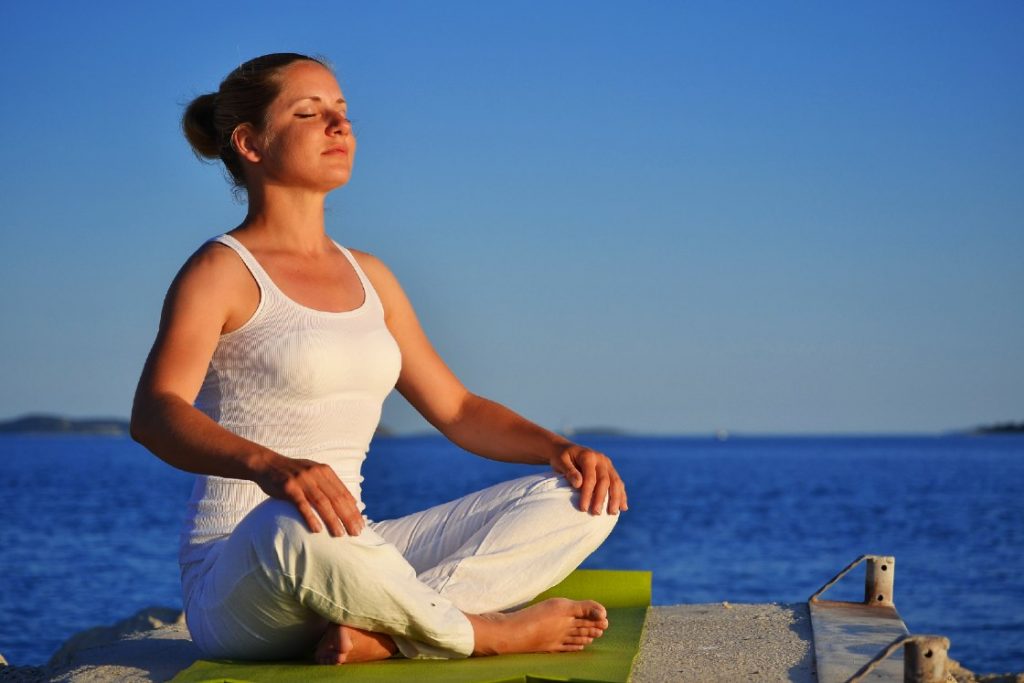
Ovarian cysts are fluid filled noncancerous masses in or on the surface of either of the ovaries. As it is mostly asymptomatic, many women don’t even realise the growth of cysts in the body. Generally, the condition does not have any significant effect on the menstrual cycle or the reproductive process, however severe ovarian cysts can cause cancer.
Yoga is an inexpensive and natural option to cure ovarian cysts. As the Polycystic Ovarian Syndrome (a hormonal imbalance that sometimes may cause ovarian cysts) elevates stress, relaxation and gentle stretching exercises of yoga can help ease pain linked to ovarian cysts. Yoga also regulates the functioning of the endocrine glands, thus resolving infertility or psychological effects to a great extent.
What are the causes of ovarian cyst? And does yoga help?
Ovarian cysts can be caused due to pregnancy, endometriosis, pelvic infections and hormonal imbalances such as Polycystic Ovarian Syndrome (PCOS). Under this condition, many small cysts grow on the surface of the ovaries as a result of the altered hormone levels.
In some situations, underlying conditions like endometriosis can be a cause. When the endometrial tissues lining the uterine wall move beyond the wall. This can come in contact with the surface of the ovaries and form cysts.
Yoga helps in maintaining menstrual flow by regulating hormones, thus reduces the causes of endometriosis and hence the ovarian cyst.
Pregnancy can be another cause of cyst formation. A corpus luteum cyst is a type of cyst that forms during pregnancy. Sometimes, instead of dissolving back, they remain active and cause further complications. A history of ovarian cysts can also promote or at least indicate the growth of future cysts.
How yoga can help treat ovarian cyst?
Yoga provides a natural way of alleviating the problems associated with ovarian cysts.
- Between 4% and 7% of women produce too much testosterone in their ovaries. Practicing yoga may help decrease testosterone levels by 29% in women with PCOS [efn_note] Mindful yoga reduces testosterone by 29% in women with polycystic ovary syndrome https://www.eurekalert.org/news-releases/863080 [/efn_note].
- Yoga asanas and gentle streching exercises provide assistance in toning the uterine muscles in women.
- A women with PCOS or suffering from ovarian cyst often experience weight gain. Yoga helps in reducing the belly fat which directly stimulate the ovarian function.
A case study by ICMR concluded that yoga resulted in the visible decrease of ovarian cyst symptoms [efn_note] Non-surgical approach towards uterine fibroid and ovarian cyst with Yoga practice https://jimcr.com/uploads/article_pdf/IMCR-02-28.pdf [/efn_note]. In a case, where the surgical diagnosis was the only option, yoga performed remarkably in the prevention and management of symptoms of ovarian cyst and uterine fibroid.
The study included yoga poses like the Bow Pose, Cobra Pose and Kapalbhati pranayama amongst many other yoga exercises. Although the patient could not carry on the practice after some time, the 3 months of regular practice cured the cyst completely and reduced the size of the fibroid.
Another research conducted by the World Journal of Pharmaceutical Research [efn_note] Management Of Polycystic Ovarian Syndrome By Yoga Practices: A Review https://wjpr.s3.ap-south-1.amazonaws.com/article_issue/1572513236.pdf [/efn_note] concluded that Yoga is a “holistic science and art of living.” Yoga poses, breathing exercises and Kriya (cleansing exercises) nourish the entire body. Pranayama, meditation and Savasana (Corpse pose) proved effective for weight reduction and stress management.
Low stress and less weight stabilize the functioning of the hypothalamus, the pituitary glands, ovarian axis and thus cures PCOS. It is said the first step towards curing PCOS or normal Ovarian cysts is getting rid of stress and obesity.
7 Best Yoga Poses to Treat Ovarian Cyst
1. Sun Salutation (Surya Namaskar)
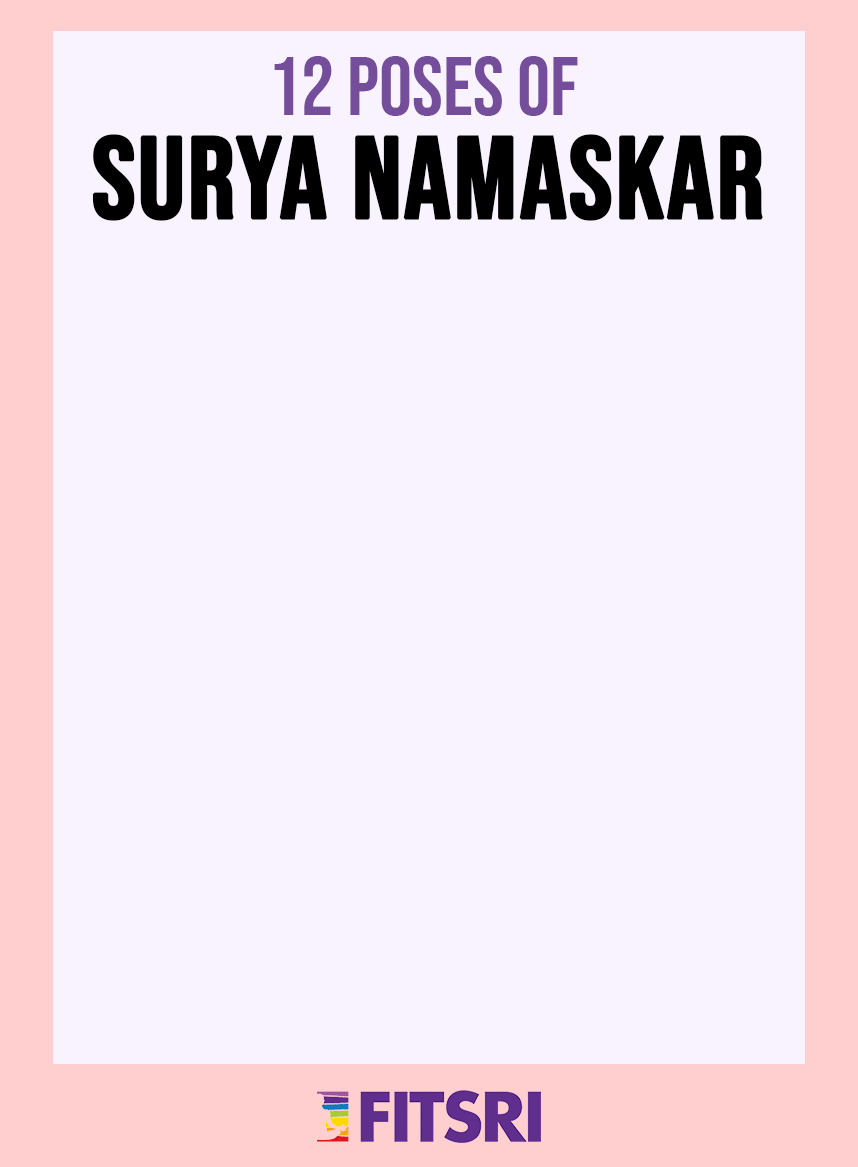
Sun Salutation is a full body stretch that links twelve yoga poses into one sequence to become a compound pose. This sequence of 12 poses will help to regulate any hormonal imbalances in women with PCOS. If 12 poses are too much for you, you can try other variations of sun salutation as well.
2. Kapalbhati Pranayama (Breath Of Fire)
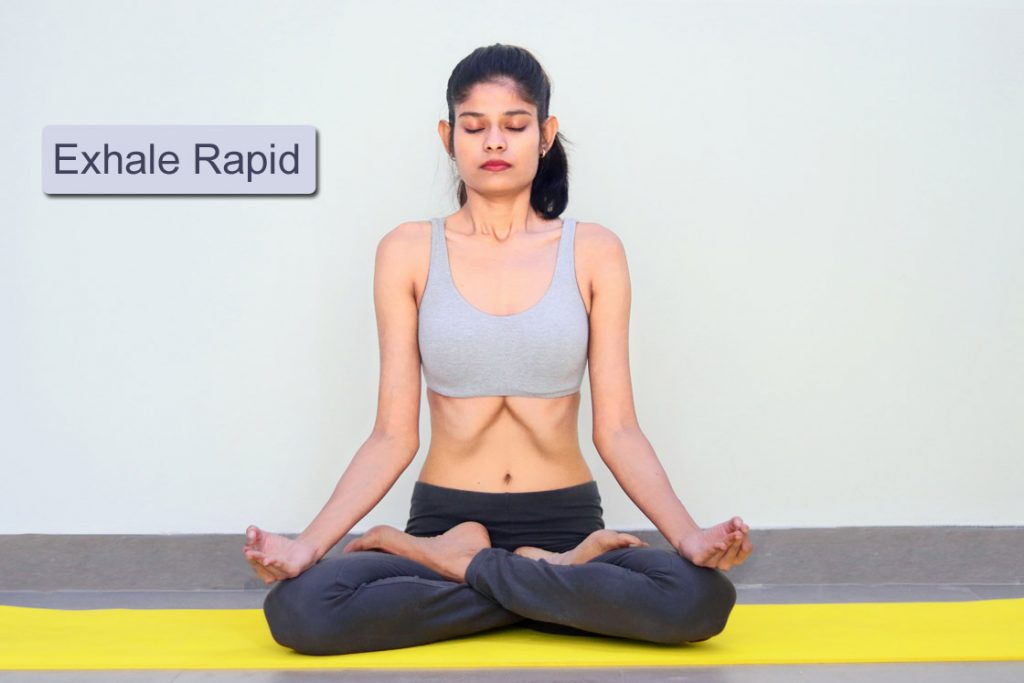
Kapalbhati is a rapid breathing technique of pranayama. In this technique, the abdominal wall is pushed inside with sharp exhalation in less time. It makes a greater impact on the abdomen and its contents, especially on the glands.
Women with PCOS have insulin resistance that gives birth to many problems including ovarian cysts and fat deposition. Kapalbhati increases basal metabolic rate, reduces fat deposition, and ultimately ends up in weight reduction [efn_note] Kapalabhati pranayama: An answer to modern day polycystic ovarian syndrome and coexisting metabolic syndrome? https://www.ncbi.nlm.nih.gov/pmc/articles/PMC4959327/ [/efn_note].
3. Bellows Breath (Bhastrika Pranayama)
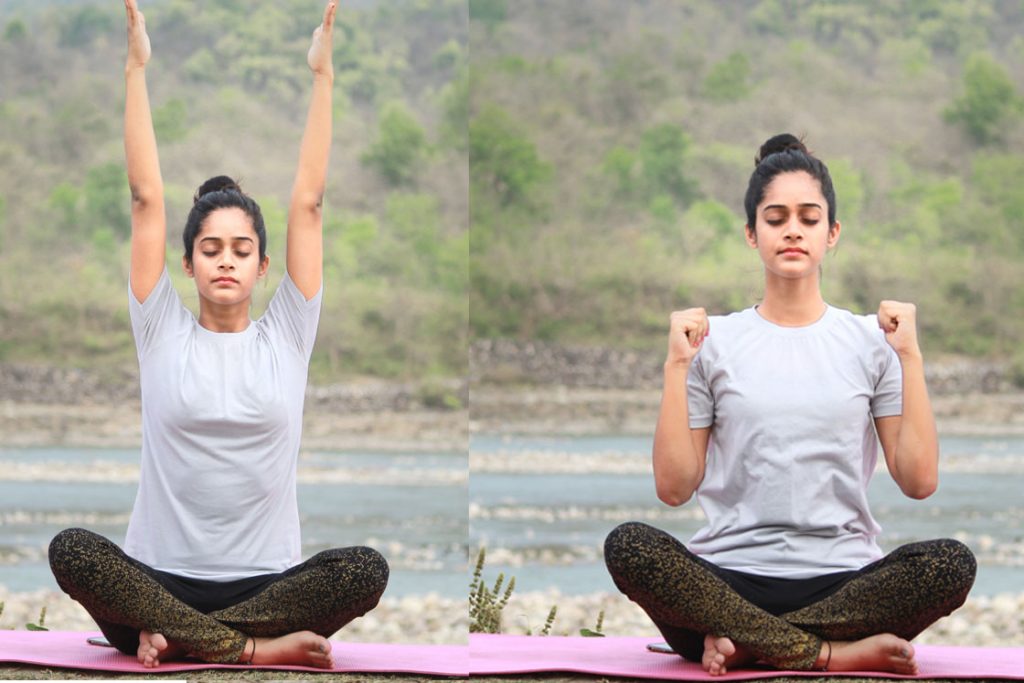
Bellows Breath is another form of Pranayama that aims at calming the mind and includes engagement of the chest and lungs. As stress increases the cyst, this pranayama is effective in stress management and reduction.
4. Plow Pose (Halasana)
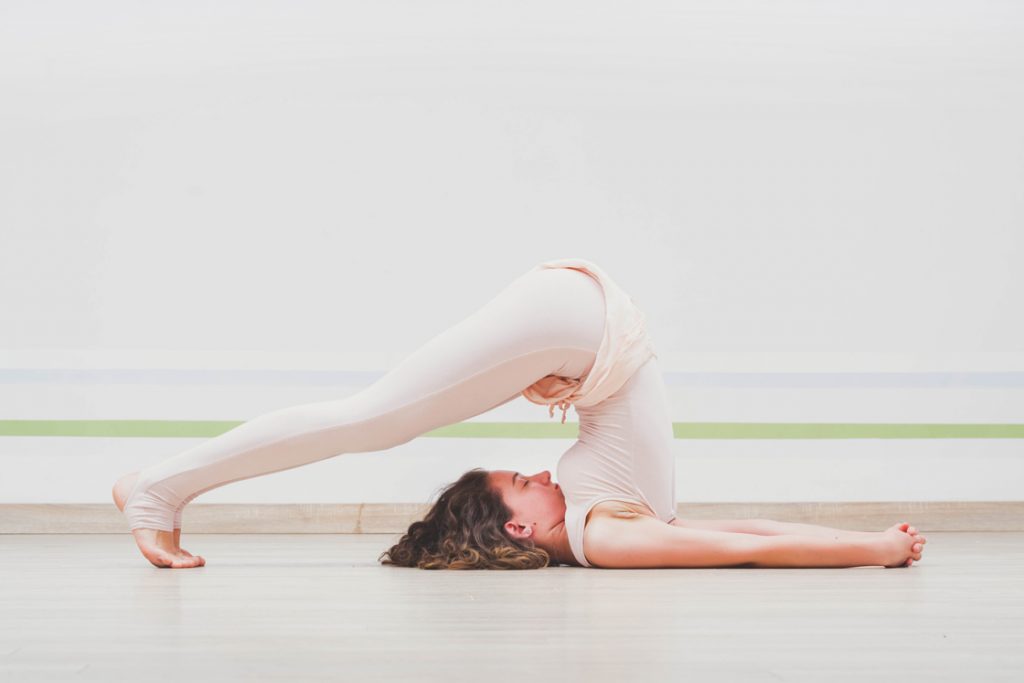
The plow pose is a backbend spine stretch that relieves back pain and makes one feel fresh. The pose cures irregularities of the menstrual cycle and balances hormones.
- Lay down on your back.
- Rest your hands on your sides. Push your lower body towards your chest so that your knees are close to your chest.
- Press your hands into the ground, to help lift your hips up off the floor, with your knee still bent at your chest.
- Move your hands to your lower back. Place your elbows on the mat.
- Walk your hands down your back slowly and raise your torso upright – in such a way that you are resting on your shoulders
- Straighten your knees in such a way that your shoulders, knees and toes are in a straight line.
- Hold this pose for a few breaths.
- Lower your feet on the floor behind your head.
5. Bow Pose (Dhanurasana)
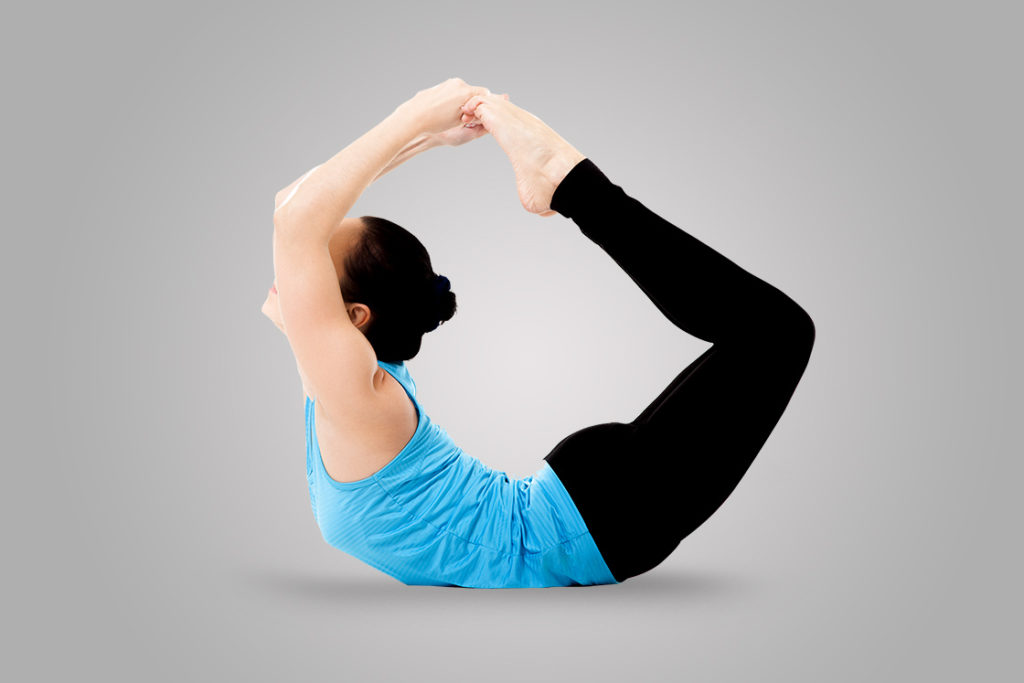
The bow pose is a back bend stretch opener that stretches the entire body. The pose provides a good stretch to the abdomen muscles and cures ovarian cysts.
- Lay on your stomach
- With your hands, reach back for the top of your toes and hold them.
- Inhale and raise your tights off the floor, raising yourself upwards. Only your belly rests on the floor.
- Once you are up, exhale.
- Inhale and exhale in that same pose.
6. Moving The Grinding Wheel Pose (Chakki Chalanasana)
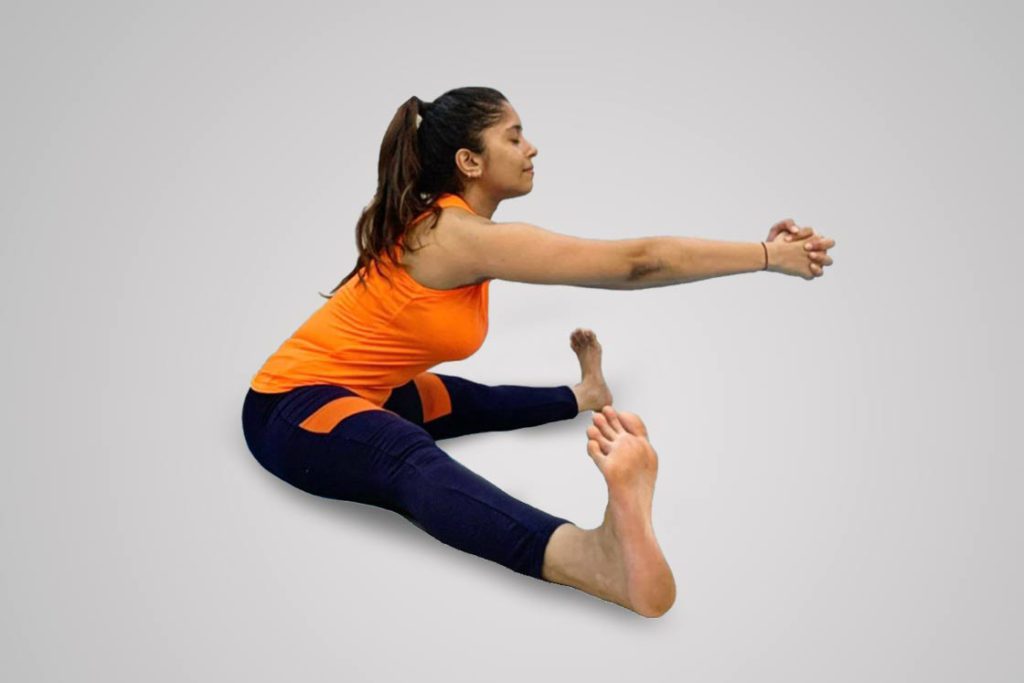
The pose is a preparatory pose to warm up the entire body for the more complex poses. It is a sitting balancing pose that enhances blood supply and reproductive organs.
- Sit with legs stretched out in a V
- Interlock your hands and stretch them outwards in front of your chest. Bring your head down.
- Bend forward as much as possible and elongate your spine.
- Now imagine churning wheat in the old fashioned Indian grinder with your hands.
Note: move your hands up to your toes and lean back as low as possible.
7. Cobra Pose (Bhujangasana)
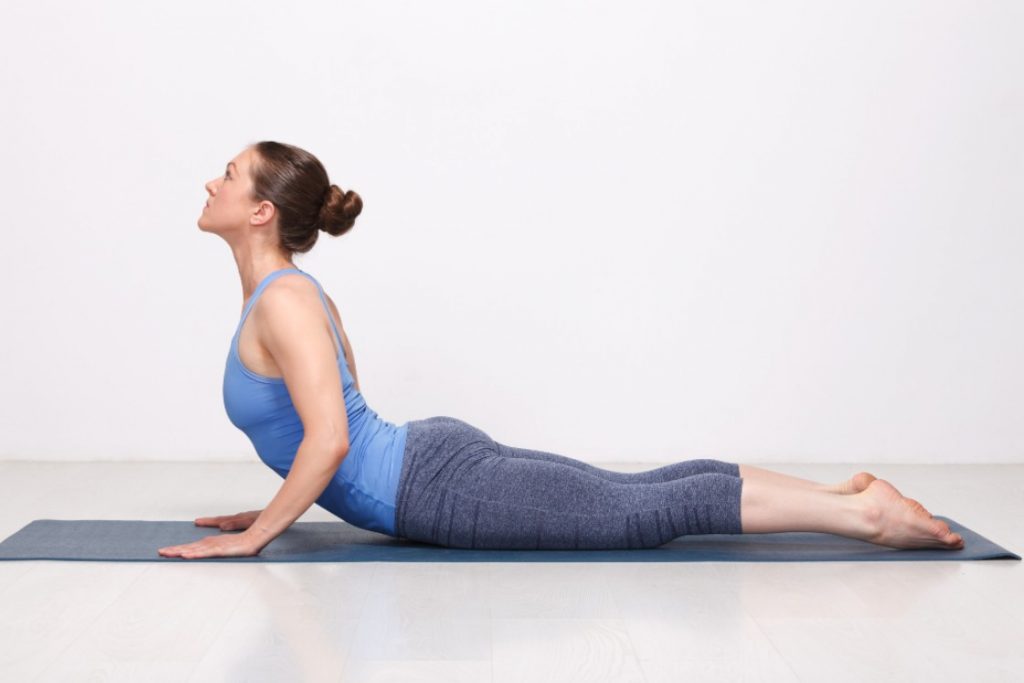
The cobra pose is backbend full body stretch the stretches the abdomen muscles. It relaxes the pelvic region and improves blood circulation in the body.
- Lay on your stomach and bring your hands under your shoulders.
- Stretch your legs outwards.
- Lift your chest up with the support of your hands, while your glutes remain on the floor.
- Lift yourself until you are no longer supporting yourself entirely with your hands and straighten your arms.
- Look forward or if possible then upwards.
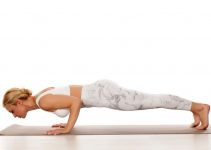
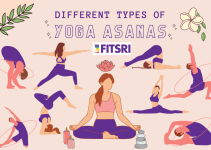



Sir I have fybriod and left overise cyst and galblader stone
You can help me please
Hello, recently I had severe unbearable stomachache. I got hospitalised and I was told that I have chocolate cyst and Normal cyst that caused pain. Many times I feel unbearable pain. Which mudra helps to get rid of these chocolate cysts and normal cyst? Please guide me. I have started my medicine but still want to get rid of this asap aa it is very difficult for me to bear the sharp pain. Please help.
You can try Apana mudra and Lotus mudra along with OM chant. Do these practices for 15 to 20 minutes each. Moreover, you can do kapalbhati breathing after each mudra session. I hope it will help.
Thank you so much sir. Hope I will get some relief.